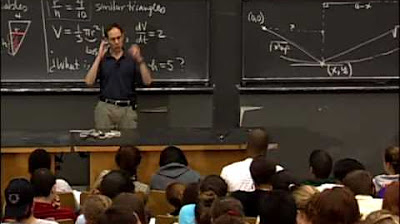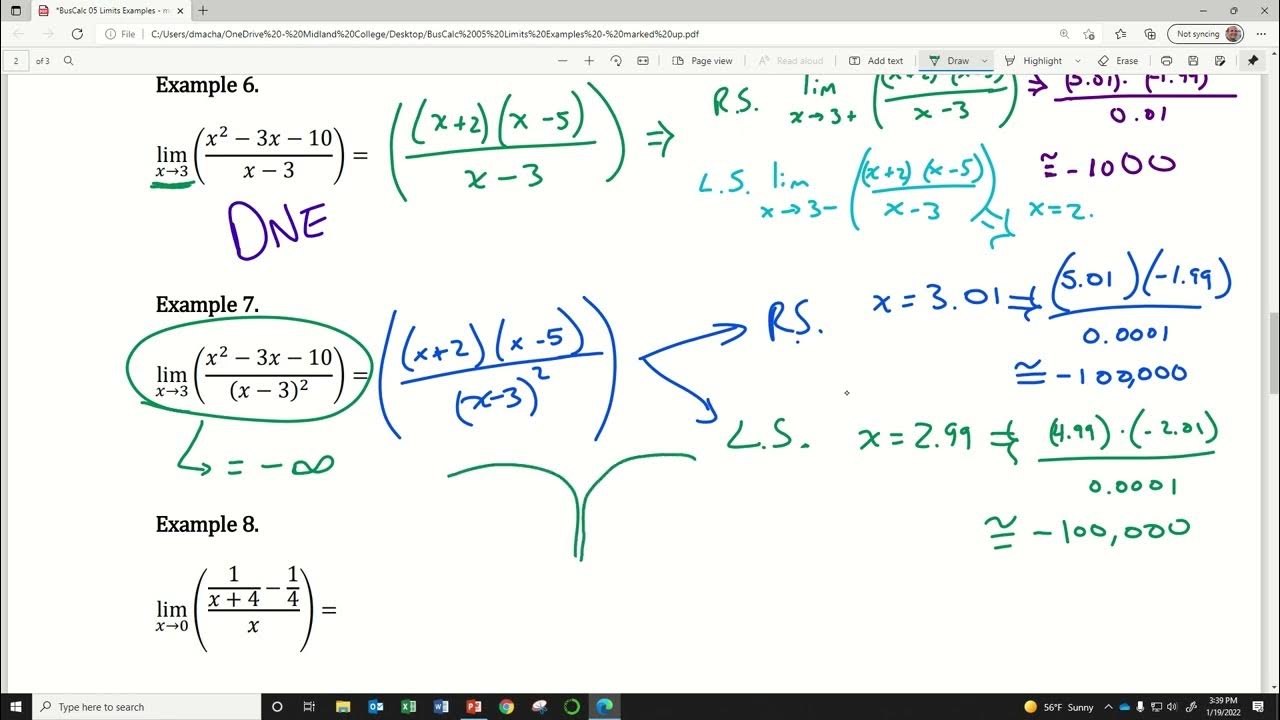Approximations. The engineering way.
TLDRThis video introduces the Newton-Raphson method, a powerful algorithm for finding zeros of real-valued functions, demonstrated through approximating square roots without a square root function. The script explores the method's application in computing, such as in video games for efficient calculations involving vectors and matrices. It also touches on fixed point iteration, showing how simple iterative processes can lead to significant mathematical constants like the golden ratio. The video emphasizes the importance of approximations in engineering and physics, highlighting the beauty and utility of numerical analysis in creating better computer graphics and enhancing user experiences.
Takeaways
- 📚 The video introduces a formula to find the square root of any positive real number using basic arithmetic without the square root function.
- 🔍 The method demonstrated is known as Newton-Raphson method or simply Newton's method, which is an algorithm for finding zeros of real-valued functions.
- 🔢 The script provides a step-by-step example of how to use Newton's method to approximate the square root of 17 with increasing accuracy through iteration.
- 📉 The video explains that the method can be extended to find other roots such as cube roots and fourth roots, and even to solve for zeros of more complex equations.
- 🎮 Newton's method has practical applications in fields like computer graphics and video games, where efficiency in calculations is crucial for performance.
- 🛠️ The script mentions that starting with a poor initial guess can lead to failure in Newton's method, emphasizing the importance of choosing a good starting point.
- 🔁 The video also touches on the possibility of getting stuck in an infinite loop with certain functions and initial guesses, which is a limitation of the method.
- 🔍 The concept of fixed point iteration is introduced, where the input equals the output, and it's shown that this can also be used to find zeros of functions.
- 🎨 The script concludes by highlighting that approximations are not just mathematical but also an art form, with the potential to greatly improve efficiency in various applications.
- 📈 The importance of numerical analysis in developing better approximation methods is emphasized, noting that small improvements can lead to significant advancements in technology.
- 💡 The video is sponsored by an engineering clock and watches, and additional information about these products and their significance is provided in the description.
Q & A
What is the main topic discussed in the video?
-The main topic discussed in the video is the Newton-Raphson method, an algorithm for finding zeros of real-valued functions, and its applications in various fields such as engineering and computer graphics.
How does the video demonstrate the Newton-Raphson method?
-The video demonstrates the Newton-Raphson method by showing how to approximate the square root of a number, such as the square root of 17, using iterative calculations without the need for a square root function.
What is the purpose of picking any positive number for x1 in the Newton-Raphson method?
-The purpose of picking any positive number for x1 is to start the iterative process. Although the initial guess can be far from the actual value, the formula will iteratively adjust and improve the approximation.
How many decimal places of accuracy can the Newton-Raphson method achieve?
-The Newton-Raphson method can achieve over 10 decimal places of accuracy in just a few iterations, depending on the function and the initial guess.
What is the general formula used in the Newton-Raphson method to find the next approximation?
-The general formula used in the Newton-Raphson method is xn+1 = xn - f(xn) / f'(xn), where f(xn) is the function evaluated at xn and f'(xn) is the derivative of the function.
What are some potential issues with the Newton-Raphson method?
-Some potential issues with the Newton-Raphson method include the possibility of the tangent line never crossing the x-axis, resulting in no x2, and getting stuck in an infinite loop if the function has certain characteristics that cause the iterations to bounce back and forth between values.
How is the Newton-Raphson method applied in video games?
-The Newton-Raphson method is applied in video games for calculations involving matrices and vectors, such as normalizing vectors for simulating lighting effects, which can involve running millions of calculations and square roots every second.
What is the fixed point iteration mentioned in the video?
-The fixed point iteration is a simple iteration formula where the next term in the sequence is just f(xn), where f is a function. It is used to find the value where the input equals the output, also known as a fixed point.
How does the video relate the fixed point iteration to finding the golden ratio?
-The video demonstrates that by using a simple iteration formula with the cosine function or e to the minus x, it is possible to approach the golden ratio or other fixed points, showing that approximations can lead to interesting mathematical discoveries.
What is the broader context of the video in terms of mathematical study?
-The broader context of the video is numerical analysis, a field of mathematics dedicated to the study of algorithms that use numerical approximation to solve mathematical problems, which is important for efficient programming and computational applications.
Outlines
📚 Introduction to Newton-Raphson Method
This paragraph introduces the Newton-Raphson method, a powerful algorithm for finding the roots of real-valued functions. The video script begins by explaining how to approximate the square root of any positive real number to a high degree of accuracy using basic arithmetic, without the need for a square root function. The process involves iterative calculations, starting with an initial guess and refining it through a formula that involves the function and its derivative. The script illustrates this with the example of finding the square root of 17, demonstrating how successive iterations bring the approximation closer to the actual value. The video also hints at the broader applications of this method, such as finding roots of higher degrees and solving equations without square roots.
📈 Newton's Method: Graphical and Formulaic Explanation
The second paragraph delves deeper into Newton's method, providing both a graphical and formulaic explanation. It describes the iterative process of approximating the square root of 17, starting with an initial guess and using the tangent line method to refine the guess. The paragraph explains how to derive a general formula for the next approximation by considering the slope of the tangent line at a given point on the function's graph. It also addresses potential issues with the method, such as the risk of failure if the initial guess leads to a tangent line that never intersects the x-axis, and the possibility of getting stuck in an infinite loop. The importance of approximations in fields like engineering and physics is highlighted, with a specific application in video games where efficient calculation of square roots is crucial for simulating 3D scenes.
🎮 Applications and Further Exploration of Iterative Methods
The final paragraph discusses the practical applications of approximation methods in video games and the broader field of numerical analysis. It presents an example of an algorithm used in 3D scene rendering in video games, which incorporates Newton's method to normalize vectors. The paragraph also introduces the concept of fixed point iteration, demonstrating how simple iterative formulas can lead to the discovery of significant mathematical constants like the golden ratio. The video script emphasizes the importance of developing efficient approximation methods, as even small improvements can have a significant impact when these algorithms are run millions of times in applications like computer graphics and video games. The paragraph concludes with a mention of future topics to be covered in the video series and a call to action for viewers interested in the engineering clock or watches featured in the video.
Mindmap
Keywords
💡Square Root
💡Newton-Raphson Method
💡Iteration
💡Derivative
💡Zero of a Function
💡Approximation
💡Cube Root
💡Fixed Point Iteration
💡Efficiency
💡Numerical Analysis
Highlights
The video introduces a formula to find the square root of any positive real number to any number of decimal places without using an actual square root function.
Demonstrates the process of finding the square root of 17 using an iterative formula, starting with an initial guess and refining it through multiple iterations.
Explains that the formula used is part of the Newton-Raphson method, an algorithm for finding zeros of real-valued functions.
Shows how to use the Newton-Raphson method to find not just square roots, but any root, such as cube roots or fourth roots, using specific formulas.
Illustrates the concept of finding zeros of equations as a way to understand the process of solving for roots like the square root of 17.
Discusses the importance of starting guesses in the Newton-Raphson method and how they can affect the convergence to the correct zero.
Presents the idea that the Newton-Raphson method can be used to solve for multiple zeros of complex equations by adjusting the starting guess.
Details the graphical interpretation of the Newton-Raphson method, showing how a tangent line is used to find better approximations of the zero.
Points out potential issues with the Newton-Raphson method, such as failing when the tangent line does not cross the x-axis.
Mentions the possibility of getting stuck in an infinite loop with the Newton-Raphson method under certain conditions.
Explains the practical applications of accurately and efficiently calculating square roots, such as in computer graphics and video games.
Introduces an algorithm used in video games for creating 3D scenes that incorporates Newton's method for normalizing vectors.
Demonstrates the concept of fixed point iteration, showing how simple iteration formulas can lead to the discovery of interesting mathematical constants like the golden ratio.
Discusses the broader implications of approximation methods in engineering and physics, and their importance in creating efficient programs and enhancing user experiences.
Highlights the field of numerical analysis as a dedicated area of study for understanding and improving approximation methods.
Promotes the engineering clock and watches designed by Flammable Mass, providing links for interested viewers to learn more and purchase.
Thanks the supporters and provides social media links for further engagement, concluding the video with a teaser for future content.
Transcripts
5.0 / 5 (0 votes)
Thanks for rating:





